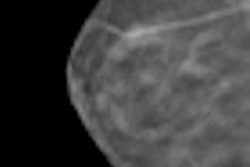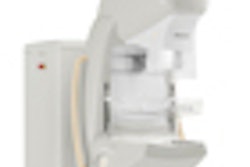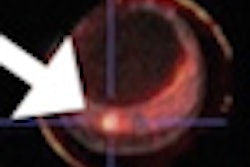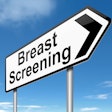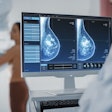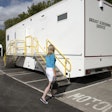Digital breast tomosynthesis isn't in the experimental phase anymore -- it's now beginning to help practices build volume and reduce recall rates, according to a presentation given last week at the annual AHRA meeting in Orlando, FL.
In a session sponsored by Hologic, a representative from the company joined with the practice administrator from a radiology group in Washington, DC, to give AHRA attendees the scoop on how implementing digital breast tomosynthesis can build their practices and reduce recall rates.
"We've moved beyond the question of how breast tomosynthesis works to the question of how the technology can help build your practice," said Georgia Hitzke, Hologic's group vice president of product and clinical education.
Hitzke kicked off the session by describing the experience of John C. Lincoln Hospital in Phoenix over a year of using digital breast tomosynthesis.
"The technology has become standard of care [at John C. Lincoln]," Hitzke said. "Since the facility installed breast tomosynthesis, 16,000 patients have been imaged, and 80% of the hospital's screening patients now request the technology. Over the course of the year, the network's screening volume increased by 22%, while its recall rates were reduced by 40%."
Field of dreams?
Breast tomosynthesis has the potential to grow a practice, agreed Patrick Waring, administrator at Washington Radiology Associates (WRA). WRA is a large private practice in the Washington, DC, area that employs 27 radiologists at six locations and performs 85,000 mammograms each year.
"Tomosynthesis is a field of dreams: If you build it, they will come," he said.
In 2011, WRA replaced all of its 2D mammography systems with 15 Hologic Selenia Dimensions systems, initially installing 3D on two units in one office. From January to June of this year they rolled out the technology on the remaining 13 machines at all of their offices in DC, Maryland, and Virginia. WRA offers 3D exams as a voluntary supplemental service to all patients, Waring said.
How did WRA market tomosynthesis to its patients? It used a multifaceted approach. The practice made tomosynthesis a prominent part of its website, placed ads in local lifestyle magazines and newspapers, and created in-office posters and patient postcards and mailings that explained the technology and its benefits.
WRA also marketed tomosynthesis to its referring physicians, according to Waring. The practice invited referring physicians to educational lectures with WRA radiologists during the rollout of tomosynthesis throughout the practice. It also sent marketing representatives to inform ob/gyn specialists and other referring physicians about the new technology, Waring said.
"A key focus of our marketing effort was directed toward educating referring physicians about tomosynthesis," he said.
In his part of the presentation, Waring also addressed a number of questions about tomosynthesis, including how WRA handles reimbursement, what patients benefit from the technology, whether the practice is finding cancers that were missed in conventional mammography, and whether the practice's recall rate has changed.
Although it's still relatively early in WRA's experience with tomosynthesis, the practice has seen the following:
- 45% of WRA's patients are choosing out-of-pocket payment for the supplemental tomosynthesis component of their screening mammogram.
- Tomosynthesis has been shown to improve performance of mammography in both fatty and dense breasts.
- WRA radiologists have found 30% more cancers with tomosynthesis than with 2D mammography.
- The practice has seen a 30% drop in recalls with tomosynthesis.
"Tomosynthesis significantly increases the confidence level of the radiologist in terms of the diagnosis of a normal mammogram," Waring said.






